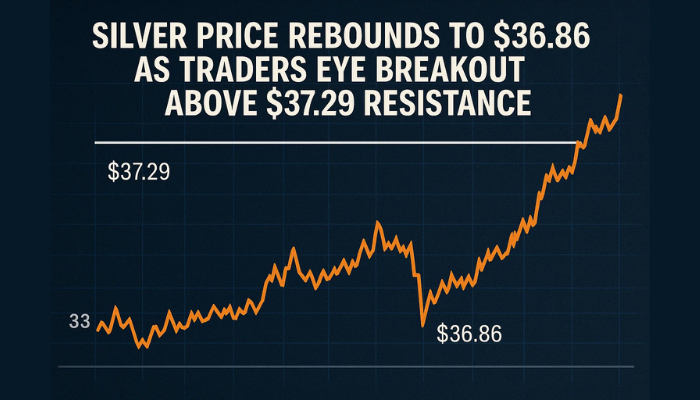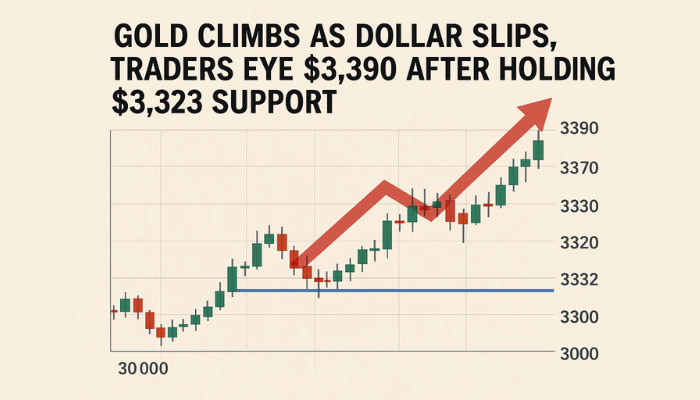Gold Price Hits $2,394 Amid Fed Rate Cut Speculation, Middle East Tensions
Gold prices recently peaked at $2,394, buoyed by expectations of dovish Federal Reserve policies and escalating geopolitical tensions.
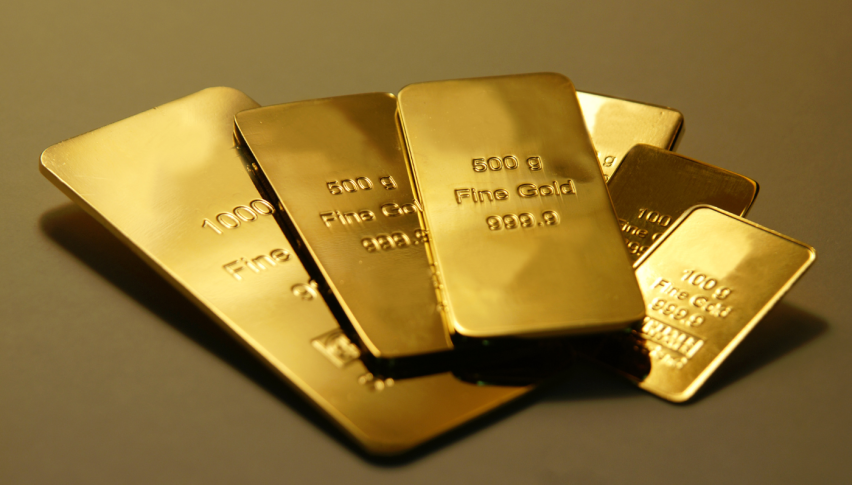
Gold prices recently peaked at $2,394, buoyed by expectations of dovish Federal Reserve policies and escalating geopolitical tensions.
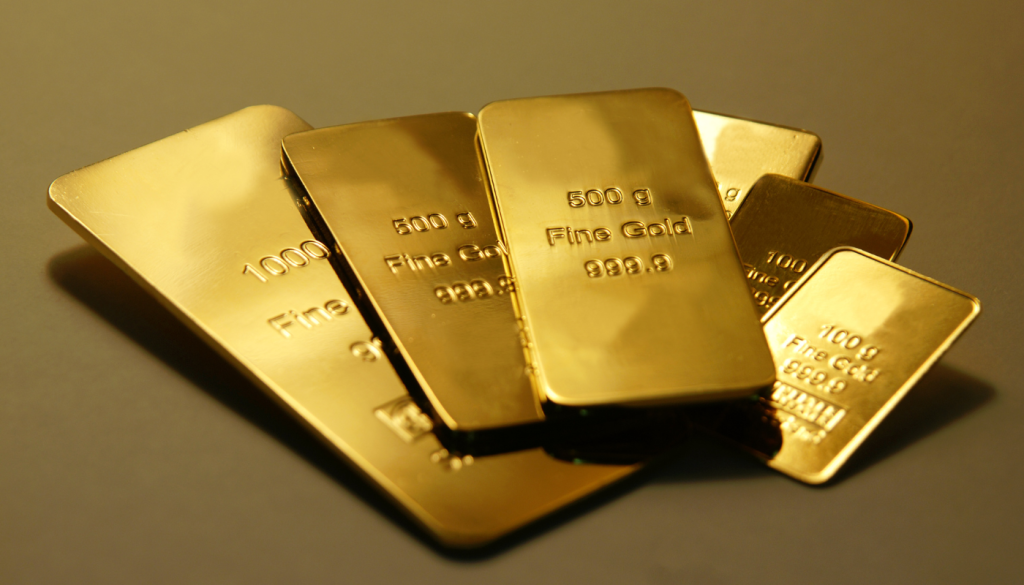
This surge reflects broader concerns about a U.S. recession, China’s economic slowdown, and conflicts in the Middle East. Despite these factors, gold’s gains are tempered by a stronger U.S. dollar and stabilizing equity markets, which often diminish gold’s allure.
What’s the new reform agenda of China in the coming five years? What opportunities can it create for India? Find out the answers in my article published in today's Mint @livemint. https://t.co/dY2hAuQy8m pic.twitter.com/M1EBW2tnzl
— Xu Feihong (@China_Amb_India) August 7, 2024
The Impact of U.S. Economic Policies on Gold
As investors anticipate the Federal Reserve’s potential interest rate cuts, the U.S. dollar faces significant pressure, influencing gold prices.
Why a Recession Isn’t in the Cards, for Now
Bearish news in jobs report rattled Wall Street
July unemployment rose & triggered key #recession indicator. That info followed Federal Reserve’s meeting where they held interest rates steady, but also signaled potential rate cut in Sep pic.twitter.com/1rTPg7bDWy— Thomas J. Hartfield (@hartfield) August 7, 2024
Analysts predict a 100% chance of a rate reduction at the Fed’s upcoming September meeting, with a strong possibility of a substantial 50-basis-point cut.
This expectation stems from recent U.S. economic data, including a notable 2.5% decrease in the trade deficit in June, thanks to a 1.5% rise in exports, particularly in aircraft and oil and gas.
“The Fed’s actions are pivotal in shaping precious metal markets, especially gold,” notes a seasoned market analyst.
These developments suggest lower U.S. bond yields, maintaining the dollar’s subdued state, which historically benefits gold as a safe-haven asset.
Geopolitical Risks Bolstering Gold’s Safe-Haven Appeal
Recent escalations in Middle East tensions, particularly the conflict involving Hezbollah’s actions against Israel, heighten global geopolitical risks, which traditionally increase gold’s appeal as a safe-haven investment.
Despite brief ease in global equity market sell-offs due to bargain buying, the overarching geopolitical landscape continues to support higher gold prices.
“The intricate dance between geopolitical instability and gold’s allure is ever-present,” explains a financial expert. Such dynamics ensure that gold remains a critical component of risk-averse investment portfolios.
Technical Outlook and Market Sentiments
Currently, gold is trading at $2,393.37, slightly up by 0.10%. The metal struggles beneath a critical resistance level at $2,416.72, which if surpassed, could signal a bullish trend.
However, with the Relative Strength Index (RSI) at 43 and prices below the 50-day EMA of $2,411.84, the market sentiment leans towards caution.
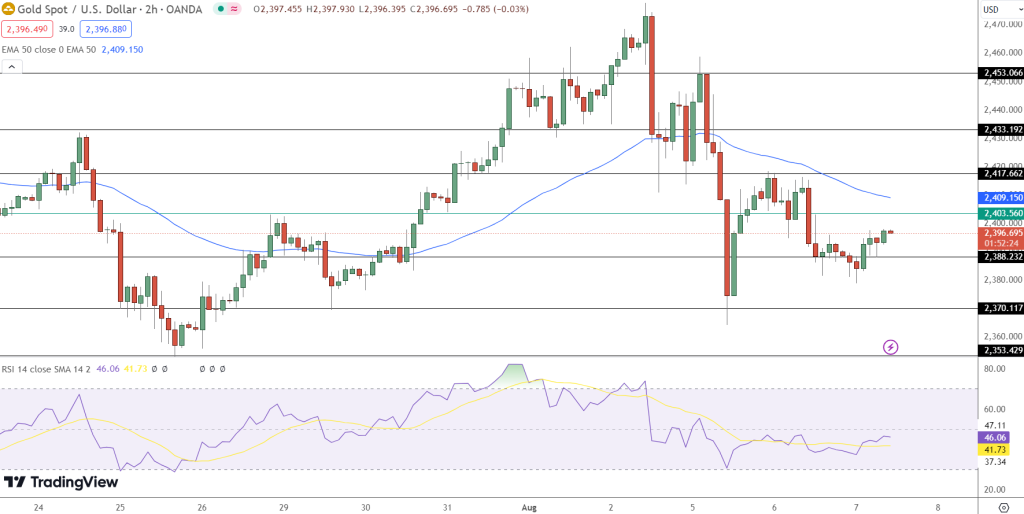
For traders, the recommended strategy includes a sell position below $2,405, targeting $2,375, while setting a stop-loss at $2,425 to mitigate risks. Such technical indicators are invaluable for investors aiming to navigate the volatile gold market effectively.
Conclusion
Gold’s current market position reflects a complex interplay of economic policy expectations, geopolitical risks, and technical indicators.
As global uncertainties persist, gold continues to play a vital role in investment strategies focused on safety and risk management.
Investors and traders alike must stay informed and agile, ready to adjust their strategies based on the latest market conditions and economic indicators.
- Check out our free forex signals
- Follow the top economic events on FX Leaders economic calendar
- Trade better, discover more Forex Trading Strategies
- Open a FREE Trading Account
